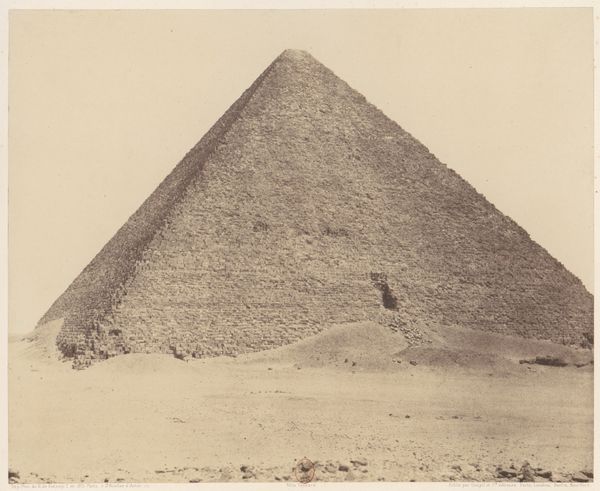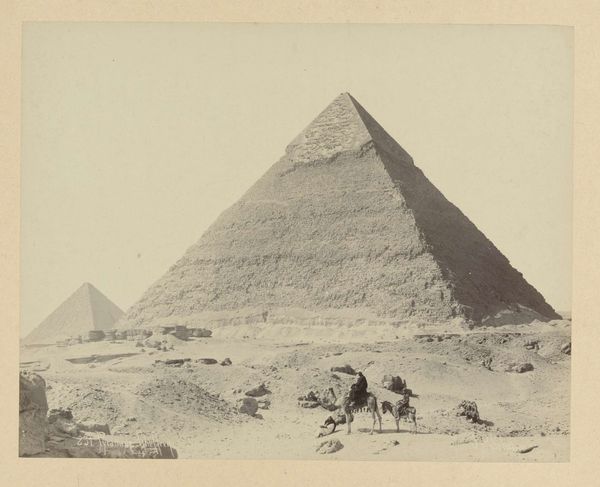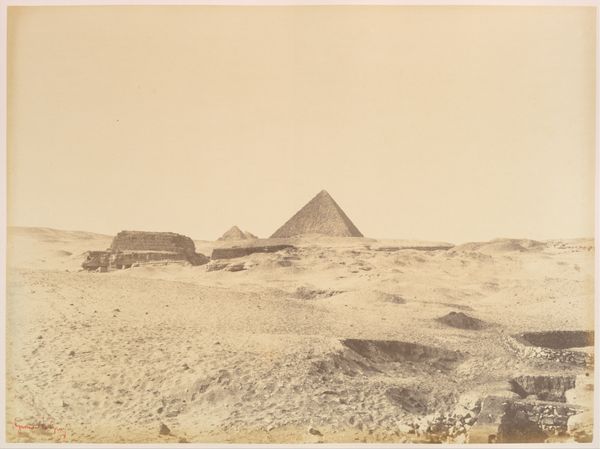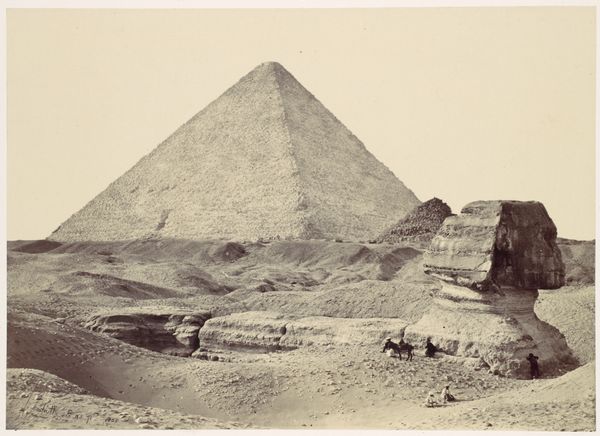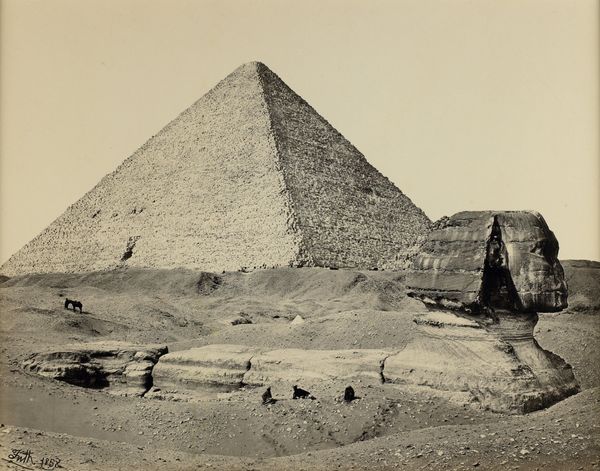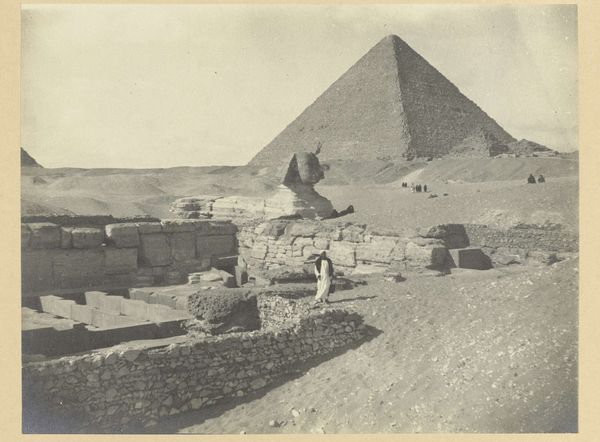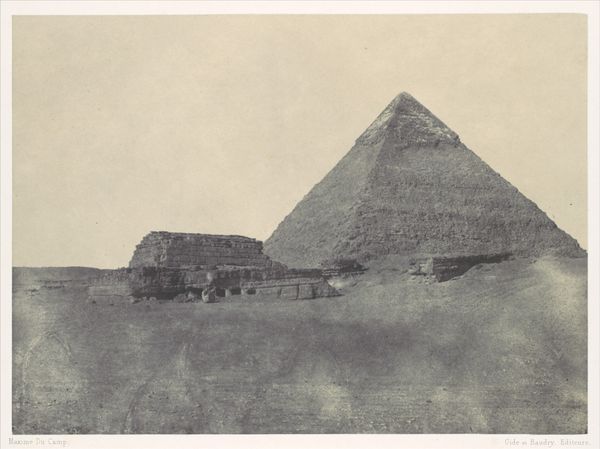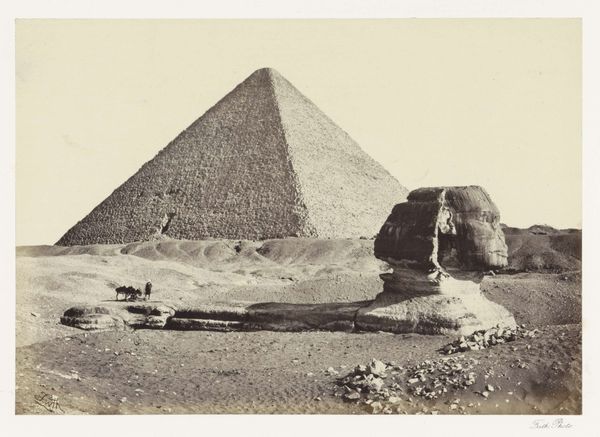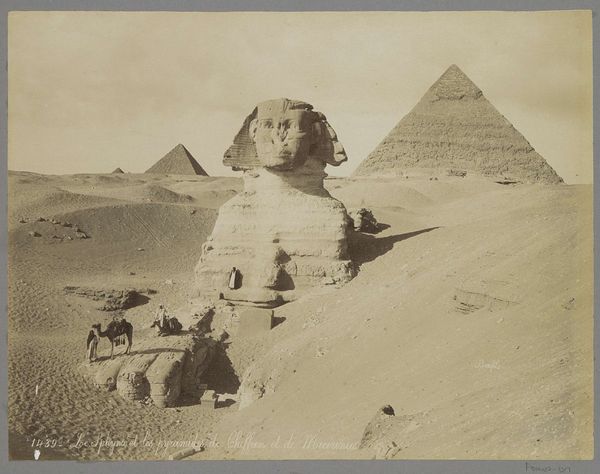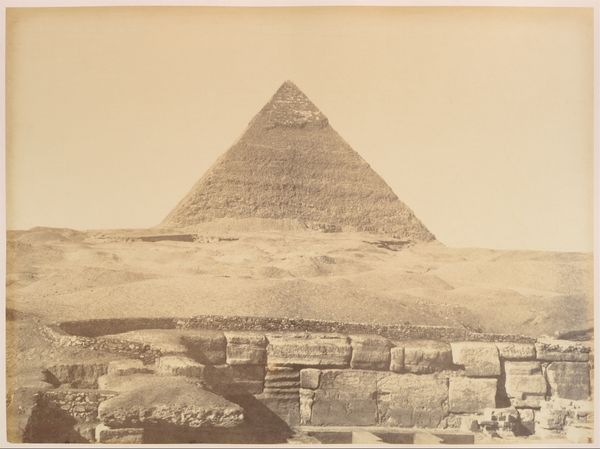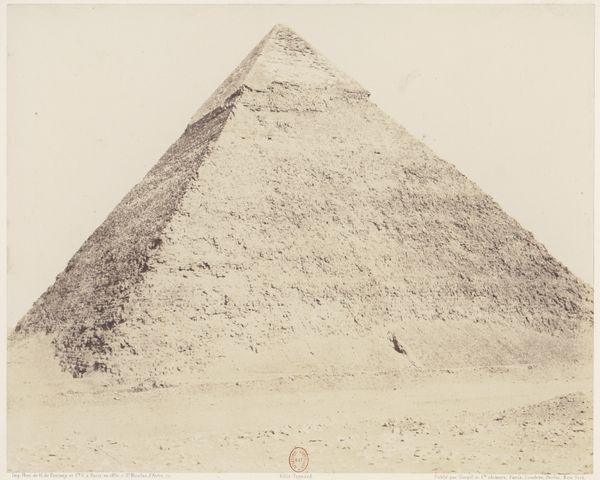
Gezicht op de piramides van Mykerinos, Chefren en Cheops bij Gizeh c. 1895 - 1905
0:00
0:00
maisonbonfils
Rijksmuseum
photography, gelatin-silver-print
#
landscape
#
photography
#
ancient-mediterranean
#
orientalism
#
gelatin-silver-print
Dimensions: height 222 mm, width 281 mm
Copyright: Rijks Museum: Open Domain
Curator: Gazing at this gelatin-silver print, I am immediately struck by the stark immensity and silence evoked by the pyramids, rendered in such soft sepia tones. Editor: That’s interesting, yes. What draws my eye first is the photograph’s clear articulation of orientalist themes—this romantic, almost colonial lens applied to the Giza pyramids by Maison Bonfils around the turn of the century. Curator: Yes, it is titled "View of the pyramids of Mykerinos, Chefren and Cheops at Giza". Bonfils was a studio in Beirut, Lebanon and produced work largely targeted toward Western tourists who flocked to the Middle East to experience ancient cultures. We should also note the human scale depicted by the tiny figures riding camels in the foreground, to demonstrate their sublime grandiosity. Editor: Precisely. The deliberate placement of those figures really amplifies that exotic “otherness," a common trope within Orientalist photography and painting. What story do you think Bonfils intended to convey to the consumer? Curator: On one level, simply the awe-inspiring longevity of human endeavor. The pyramids, eternal symbols of power, were believed to facilitate the pharaoh's journey to the afterlife, embodying potent beliefs and funerary rituals that have resonated across millennia. Editor: Agreed. And yet, by framing this ancient power within a composition palatable to European tastes, Bonfils arguably repackages Egyptian history, transforming potent symbols of authority into a commodity for the Western gaze. It strips away layers of complex sociopolitical narrative in favor of presenting a flattened image primed for colonial consumption. Curator: A flattening, perhaps, but one that also preserved, in its own way, a particular historical moment: Egypt on the cusp of modernity, still imbued with ancient grandeur. Its appeal still holds for contemporary viewers as much as for past generations, capturing something of the vast scale of the landscape, both physically and historically. Editor: And yet, a vital understanding lies in recognizing how that capture shaped – and was shaped by – its social context, acknowledging the West's dynamic engagement with Egypt's monumental past. The photograph is as much about our inherited perspective as it is about documenting pyramids themselves. Curator: So the power lies perhaps not so much in the symbols of the image itself, but in its own shifting history and legacy over time. A worthwhile question as we walk these halls and connect the artifacts of then with audiences now.
Comments
No comments
Be the first to comment and join the conversation on the ultimate creative platform.

